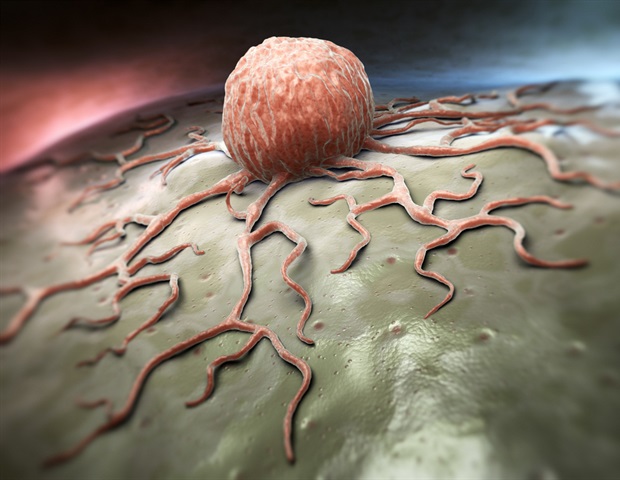Report on the Tumor Microenvironment in Osteosarcoma and Its Alignment with Sustainable Development Goals (SDGs)
Introduction
Osteosarcoma, the most common primary bone cancer in adolescents, presents significant challenges in treatment due to its high metastatic potential and limited response to conventional therapies. The complex tumor microenvironment (TME) plays a critical role in disease progression and treatment resistance. This report emphasizes the importance of understanding the TME in osteosarcoma within the framework of the United Nations Sustainable Development Goals (SDGs), particularly SDG 3: Good Health and Well-being, and SDG 9: Industry, Innovation, and Infrastructure.
The Tumor Microenvironment and Its Components
- Immune Landscape
The immune microenvironment in osteosarcoma is characterized by the presence of tumor-associated macrophages (TAMs), myeloid-derived suppressor cells (MDSCs), and regulatory T cells. These cells create an immunosuppressive niche that enables cancer cells to evade immune surveillance. Pro-inflammatory cytokines and immunosuppressive factors further complicate immune responses, contributing to drug resistance and metastasis.
- Strategies to reprogram immune cells and enhance anti-tumor immunity are under investigation.
- These approaches align with SDG 3 by promoting innovative therapies to improve health outcomes.
- Extracellular Matrix (ECM) and Stromal Components
Fibroblasts, mesenchymal stem cells, and endothelial cells within the TME provide structural and biochemical support to osteosarcoma cells. They secrete growth factors, cytokines, and angiogenic signals that promote tumor growth, invasion, metastasis, and chemotherapy resistance.
- Targeting the interactions between stromal and cancer cells is a growing research focus.
- This research supports SDG 9 by fostering innovation in cancer treatment technologies.
- Hypoxia in the Tumor Microenvironment
Hypoxia induces genetic instability, increased angiogenesis, and therapy resistance through activation of hypoxia-inducible factors (HIFs). Therapeutic strategies aimed at inhibiting HIF signaling are emerging to reduce tumor aggressiveness and improve treatment sensitivity.
- These efforts contribute to SDG 3 by advancing novel treatment modalities.
Advances in Therapeutic Approaches
Recent developments in targeted therapies and immunotherapy are transforming the osteosarcoma treatment landscape:
- Immune checkpoint inhibitors, CAR-T cell therapy, and monoclonal antibodies are being employed to harness the immune system against cancer.
- Precision medicine targeting tumor-specific genetic alterations and signaling pathways offers hope for metastatic or recurrent cases.
- These innovations support SDG 3 by improving health and well-being through advanced medical interventions.
Conclusion and Future Directions
Understanding the dynamic interactions within the osteosarcoma microenvironment is essential for developing effective, personalized treatments. Targeting key TME components aims to overcome drug resistance and improve patient outcomes, aligning with the global commitment to SDG 3. Furthermore, ongoing research and innovation in this field contribute to SDG 9 by fostering resilient infrastructure and promoting sustainable industrialization in healthcare.
References
Yu, Y., et al. (2025). Tumor microenvironment in osteosarcoma: From cellular mechanism to clinical therapy. Genes & Diseases. doi.org/10.1016/j.gendis.2025.101569.

1. Sustainable Development Goals (SDGs) Addressed or Connected
- SDG 3: Good Health and Well-being
- The article focuses on osteosarcoma, a form of cancer, highlighting disease progression, treatment resistance, and emerging therapies. This directly relates to SDG 3’s aim to ensure healthy lives and promote well-being for all at all ages.
- SDG 9: Industry, Innovation and Infrastructure
- The discussion of recent advances in targeted therapies, immunotherapy, and precision medicine reflects innovation in medical research and infrastructure development.
- SDG 17: Partnerships for the Goals
- The article references collaborative research efforts and clinical advances, implying the importance of partnerships in scientific progress and healthcare improvements.
2. Specific Targets Under Those SDGs Identified
- SDG 3: Good Health and Well-being
- Target 3.3: By 2030, end the epidemics of AIDS, tuberculosis, malaria and neglected tropical diseases and combat hepatitis, water-borne diseases and other communicable diseases. (While osteosarcoma is not infectious, the broader goal of combating diseases and reducing mortality is relevant.)
- Target 3.4: By 2030, reduce by one third premature mortality from non-communicable diseases through prevention and treatment and promote mental health and well-being.
- Target 3.b: Support the research and development of vaccines and medicines for the communicable and non-communicable diseases that primarily affect developing countries.
- SDG 9: Industry, Innovation and Infrastructure
- Target 9.5: Enhance scientific research, upgrade the technological capabilities of industrial sectors, including health-related industries.
- SDG 17: Partnerships for the Goals
- Target 17.6: Enhance North-South, South-South and triangular regional and international cooperation on and access to science, technology and innovation.
3. Indicators Mentioned or Implied to Measure Progress
- Indicators related to SDG 3:
- Incidence and mortality rates of osteosarcoma and other cancers (implied through discussion of disease progression and treatment resistance).
- Survival rates and patient outcomes following new therapies such as immunotherapy and targeted treatments.
- Access to and availability of advanced cancer treatments and clinical trials.
- Indicators related to SDG 9:
- Number of new medical technologies and therapies developed and approved for osteosarcoma treatment.
- Investment in research and development in oncology and related biomedical fields.
- Indicators related to SDG 17:
- Number and quality of international research collaborations and partnerships focused on cancer research.
- Funding and resource sharing for scientific innovation in cancer therapy.
4. Table: SDGs, Targets and Indicators
| SDGs | Targets | Indicators |
|---|---|---|
| SDG 3: Good Health and Well-being |
|
|
| SDG 9: Industry, Innovation and Infrastructure |
|
|
| SDG 17: Partnerships for the Goals |
|
|
Source: news-medical.net







